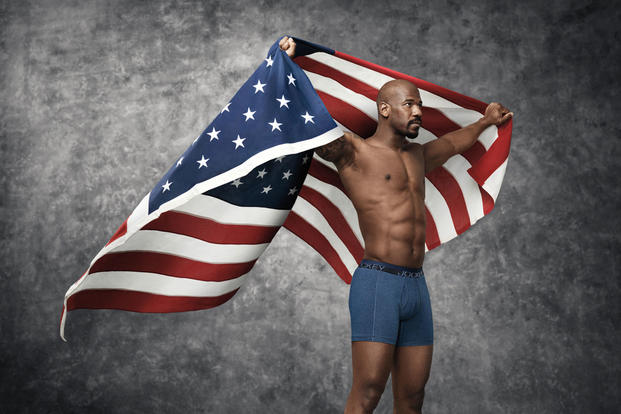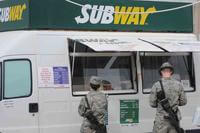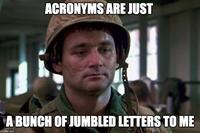Navy veteran and former SEAL Remi Adeleke is the latest veteran to join the Jockey Show 'Em What's Underneath, Show 'Em Your Jockey campaign. The ads feature Americans who might not be famous but are exceptional, and each person typifies a particular character trait. Remi's is #ShowEm Resilience.
Related: Learn more about Jockey’s “Show ’Em What’s Underneath” campaign.
Remi Adeleke was born in West Africa and moved to the Bronx with his mother after his father died when Remi was five. He joined the Navy to turn his life around at age 19 and, after serving with the Elite SEAL Teams, he returned home and began a new life as a minister and motivational speaker. More recently, he's taken up acting and has a role in this summer's Transformers: The Last Knight. He talked to us about his experiences and why he's working with Jockey.
What inspired you to join the US Navy?
I was inspired through films.
In 1995, I saw the movie Bad Boys and it inspired me tremendously. That was the first film where I saw two African-American men who looked like me and had the same demeanor I had. They weren't playing gangsters, they were playing heroes. A year later, Michael Bay's second film The Rock came out and gave me my first exposure to Navy SEALs.
Fast forward to when I was about 19 or 20. I had been in a lot of trouble, doing some things I wasn’t supposed to be doing. I came to the realization that if I don’t leave this life behind, I'll end up dead or in prison. That’s when I joined the Navy to be a SEAL.
What it was like to go through the training?
I went through BUD/S Training, Basic Underwater Demolition/SEAL Training. It sucked. That’s the only way you can describe it, man. Every day of my life was misery. But it has to be that way to create the SEALs that it produces.
By far the worst part of SEAL training for me was the cold. They lay you down in the water and strip you down to your skivvies. You stay there until you quit or your trainers decide to pull you out. There were times when I would get hypothermia. I hyped out after a two-mile ocean swim because I had no body fat in the cold ocean. My lowest core temperature during hell week was 88.7 degrees.
What led to your decision to leave and transition to civilian life?
My wife and I wanted to have kids. When you're in military special operations, you're away from home a lot. I wanted to make sure that I could be around for my family.
What did you do when you came home? What kind of career did you pursue?
I got into public speaking for churches, corporations and athletic teams. Then I started my own consulting firm where I provide teamwork communication and leadership training for athletes and corporations.
In 2013, I met Catherine Humphries and her husband, Harry. He’s a former SEAL who had worked with Michael Bay on The Rock in 1996. Any time Michael Bay or Jerry Bruckheimer need military assets, they go to Harry and Catherine.
They were looking for background extras for a TV show called The Last Ship. Catherine reached out to me knowing that I had military experience. I was reluctant because I didn’t feel comfortable as an actor. After some persuasion I eventually said I’d do it.
I didn’t do any acting for three years after that. In May of 2016, the casting person from The Last Ship remembered me. She called and said, “Hey, Michael Bay is looking for somebody with your look and background for the new Transformers. Would you be interested in filming tomorrow?” Absolutely!
The next day I was on set filming the movie. One day turned into three weeks, three weeks turned into six months of filming. I eventually got upgraded from a background extra to a principal role in the film.
Why is the Jockey campaign different than a regular commercial gig for you?
What I love about the campaign is that it's not just about selling a brand or promoting a brand. Jockey is about utilizing everyday heroes, everyday people and their stories of perseverance, family, hope, and resilience. They’re using those stories not just to promote a brand, but to inspire change in people.
There aren’t a lot of brands that feature common people. A lot of the big brands use celebrities. That’s okay, there's nothing wrong with that, but very few brands are willing to use everyday people and their stories to inspire others.










